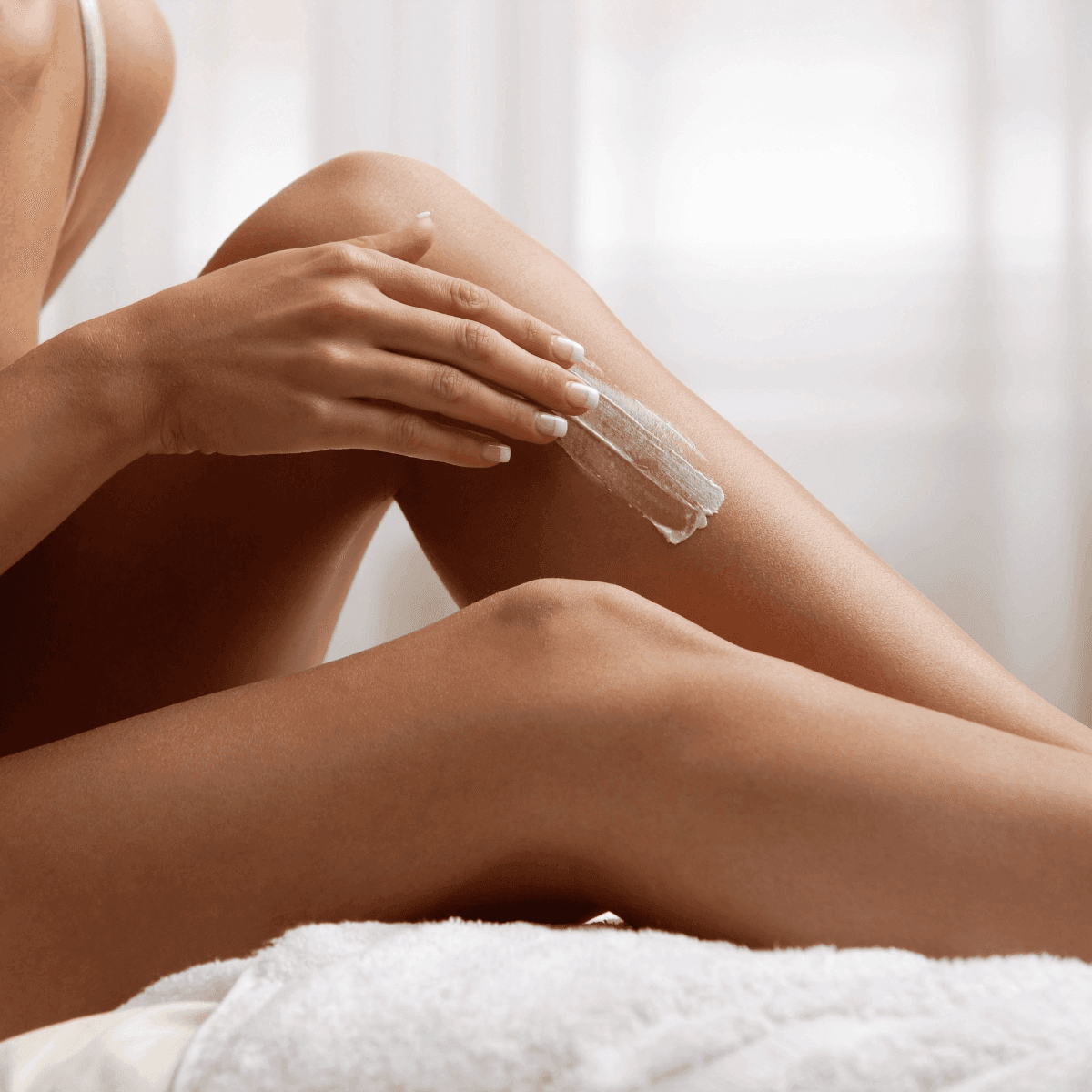As the temperatures drop and the air becomes crisp, many of us look forward to cozy blankets, hot drinks, and festive fun. But for some, the change of season comes with an unwelcome guest – seasonal eczema. It’s a skin condition that seems to flare up every winter, causing irritation, dryness, and sometimes even embarrassment.
But fear not – seasonal eczema is manageable with the right treatments, and in this article, we’re going to explore what it is, why it happens, and most importantly, how you can tackle it head-on with effective solutions!
Contents
What is Seasonal Eczema?
Seasonal eczema is a type of atopic dermatitis that causes your skin to become red, itchy, dry, and sometimes even cracked. It’s not just a winter skin issue – it can also flare up during transitional seasons when your skin faces sudden changes in weather and humidity. While eczema can affect anyone at any time, seasonal eczema is particularly notorious in colder months when the air tends to be drier, and our skin struggles to stay hydrated.
If you’ve ever had flaky, irritated patches on your skin that seem to get worse when the seasons change, then you’ve likely experienced seasonal eczema. Commonly affected areas include the face, hands, and elbows, but it can pop up anywhere. For many, it’s an ongoing battle to keep the skin in check, but with the right knowledge and treatments, it’s possible to manage – and even prevent – the irritation.

Why Does Seasonal Eczema Flare Up in the Colder Months?
So, why does eczema seem to get worse when the temperature drops? The cold winter months bring a combination of environmental and lifestyle factors that make your skin more vulnerable to flare-ups.
Dry Air
Cold air is incredibly dry, and this lack of moisture in the environment can strip your skin of its natural oils. Without those oils, your skin becomes more prone to dryness and irritation, which can trigger eczema. If you live in an area with harsh winters, the indoor heating doesn’t help either. Heaters suck the moisture from the air, making it even harder for your skin to retain hydration.
Hot Showers
As tempting as it is to warm up with a steamy shower, hot water can exacerbate eczema by further drying out your skin. The combination of long, hot showers and winter winds can leave your skin feeling tight and flaky. It’s a one-two punch that your skin might not be prepared for!
Wool and Winter Clothing
The cozy wool sweaters, scarves, and gloves we love to wear in winter can sometimes cause irritation. Wool tends to be rough on the skin and can trigger itchiness, leading to eczema flare-ups. It’s a catch-22 – staying warm and stylish often means exposing your skin to irritation.
Reduced Sun Exposure
In winter, there’s less sunlight, which means less Vitamin D. This vitamin is essential for skin health, and its absence can make eczema worse. Plus, the lack of sun exposure means your skin isn’t getting the same level of protection from environmental stressors.
Allergens
Winter can also bring its own set of allergens, like dust mites or mold, which tend to thrive indoors during colder months. These allergens can trigger eczema flare-ups in sensitive individuals.
Can Seasonal Eczema Be Treated?
Good news: yes, seasonal eczema can absolutely be treated! While it might not be possible to completely cure eczema, you can take steps to manage the condition and reduce flare-ups. The key is understanding the triggers and applying targeted treatments that will keep your skin calm, hydrated, and comfortable.

Effective Treatments for Seasonal Eczema
Now, let’s dive into some effective treatments that can help you keep eczema in check during the colder months.
Topical Treatments
When dealing with seasonal eczema, topical treatments are usually the go-to solution. Prescription creams like corticosteroids or calcineurin inhibitors can help reduce inflammation, calm the redness, and stop the itching. For milder cases, over-the-counter hydrocortisone creams can provide relief.
But don’t forget about moisturizers! Thick, fragrance-free, and gentle moisturizers are a must-have in your skincare routine to keep your skin hydrated and restore its barrier. Look for products with ingredients like ceramides, glycerin, and hyaluronic acid, which help lock in moisture and keep your skin soft and smooth. Apply them right after a shower to seal in the hydration while your skin is still damp.
Hydrating Skin Treatments
Winter skin can get parched quickly, so adding hydrating treatments to your skincare arsenal is a game-changer. Hydrating facials or treatments that focus on deep moisture infusion can be a lifesaver during this time of year. Treatments like hydrafacials use a combination of hydration and exfoliation to plump up the skin, making it less prone to irritation.
Additionally, DIY masks made with ingredients like honey, avocado, and aloe vera can give your skin a soothing boost of hydration. Just remember to patch-test any new product or ingredient to make sure it won’t trigger a flare-up!
Chemical Peels and Microdermabrasion
If your eczema leads to flaky, rough patches, it can be tempting to scrub away the dead skin. But harsh scrubbing can worsen the condition, so instead, consider more gentle treatments like chemical peels or microdermabrasion.
These procedures exfoliate the top layer of skin to remove dead cells and promote healthier skin underneath. Chemical peels use acids to gently dissolve dead skin, while microdermabrasion uses tiny crystals to buff away the surface. Both methods can help improve the texture of your skin and reduce the appearance of eczema scars. Always consult with a professional to determine which treatment is best for your skin type!
Laser Therapies
For those struggling with persistent eczema or severe redness, laser treatments can offer a non-invasive solution. Certain laser therapies, like pulsed dye lasers, target the blood vessels underneath the skin to reduce redness and inflammation. These treatments can help calm down irritated skin and promote healing.
It’s important to work with a dermatologist or licensed professional who understands your skin’s needs to ensure the best results.
Lifestyle Changes
While topical treatments are essential, lifestyle changes can make a significant difference in managing eczema. Start by reducing the length and temperature of your showers – opt for lukewarm water and avoid soaking for too long.
Investing in a humidifier can also help add moisture back into the air, keeping your skin from drying out. And don’t forget to drink plenty of water to stay hydrated from the inside out.
Also, try switching to softer fabrics like cotton for your clothing, as they’re gentler on the skin than wool. And if you’re sensitive to allergens, consider using hypoallergenic bedding and regularly cleaning your living space to reduce dust mites and other triggers.
Prevention Tips for Seasonal Eczema
Managing eczema is all about being proactive. Here are a few tips to help prevent flare-ups during the colder months:
- Stick to a consistent moisturizing routine.
- Avoid harsh soaps and body washes.
- Choose clothing made from soft, breathable fabrics.
- Use a humidifier to keep your indoor air moisturized.
- Limit the time spent in hot showers or baths.
Seasonal eczema might feel like an unwelcome guest, but with the right treatments and a little extra care, you can enjoy the beauty of winter without constantly battling irritated skin. From topical creams to hydrating facials and laser treatments, there are plenty of ways to soothe your skin and reduce flare-ups. So, bundle up, hydrate, and remember that eczema doesn’t have to steal your seasonal glow!


